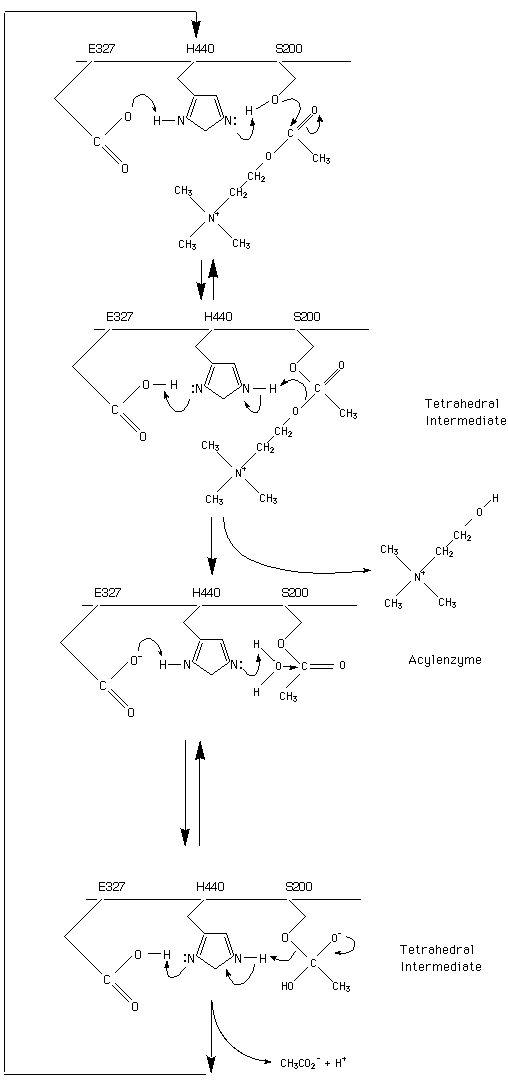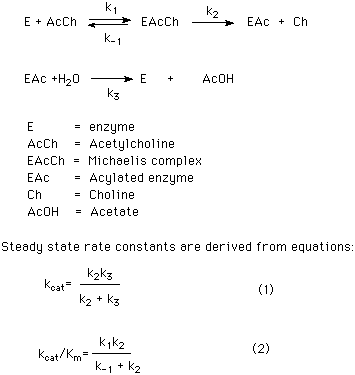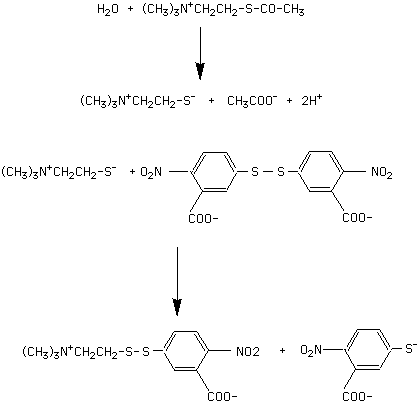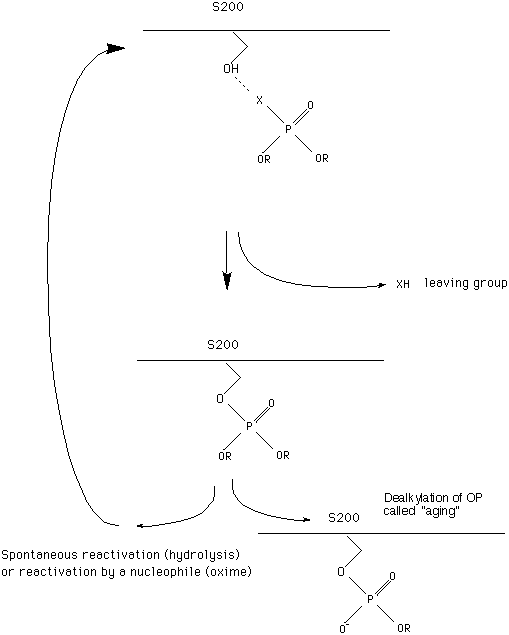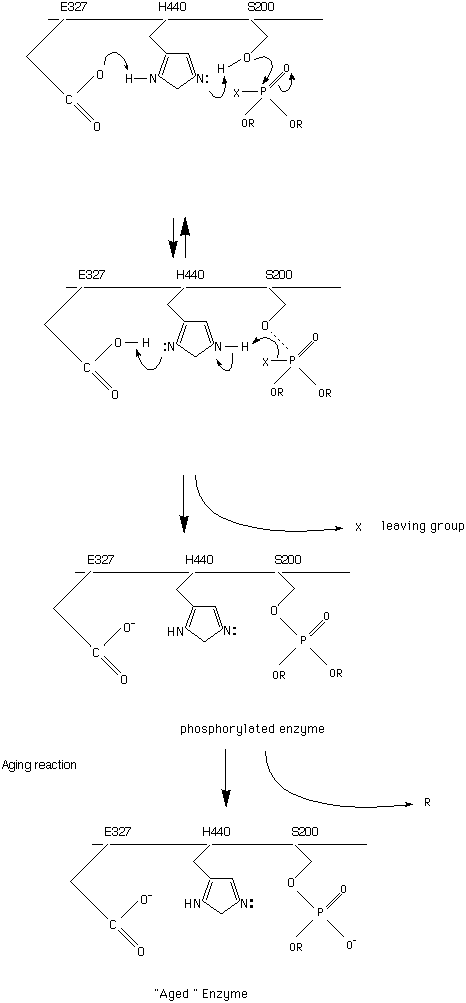Kinetics notes
A short overview of some of the classical aspects of the enzymatic reaction catalysed by acetylcholinesterase
Introduction to the specificities of Acetylcholinesterase kinetics can be found in the thesis of Kurt Giles .
The classical description of hydrolysis of acetylcholine by acetylcholinesterase is shown below.
From this description the minimal kinetic mechanism can be deduced and the following equations for the steady state rate constants can be derived.
Biochemical calculations of Acetylcholinesterase activity using the Ellman reaction
The use of thiocholine esters together with the Ellman reagent allows colorimetric detection of cholinesterases. This type of reaction in which the free sulfhydryl product of the enzymatic hydrolysis reacts with 5,5'dithiobis(2-nitro benzoic acid) is presented in
One Ellman unit is defined as 1 OD /min/ml.
Other information on substrates, inhibitors, and even more on kinetic data of reactions of chemicals on wild type or mutated cholinesterases are available in the following tables
- Substrates Natural substrates and substrates used in biochemical analysis, with data on kinetics (Km, Kcat, Kapp......)
-
Inhibitors
Information on inhibitors with data on kinetics. (Ki, IC50....).
You can also browse the inhibitors by Type (Natural, organophosphates, Carbamates...)
The classical description of inhibition of acetylcholinesterase by organophosphate
Cholinesterases are readily phosphorylated at the active site serine, by a variety of organophosphorus agents (OP) and Carbamatescarbamates. These compounds have agricultural, medical and military applications
Reactivation
During inhibition, carbamylated or phosphorylated enzyme is produced instead of the acetylated enzyme generated during ACh hydrolysis. Binding of substrate cannot occur, and decarbamylation or dephosphorylation of the enzyme through hydrolysis is much slower than the deacetylation which occurs during substrate hydrolysis. In certain cases reactivation cannot take place due to a rapid unimolecular reaction called aging (see below.
Wilson found that hydroxylamine would reactivate phosphorylated AChE by releasing the phosphorylgroup attached to the serine residue more rapidly than water.
It was later found that many hydroxamic acids (RCONHOH) and Oximes (RCH=NOH) were more effective reactivators and less toxic than hydroxylamine at the concentrations required for reactivation.
The reaction of phosphorylated AChE with an Oxime is shown on the following figure
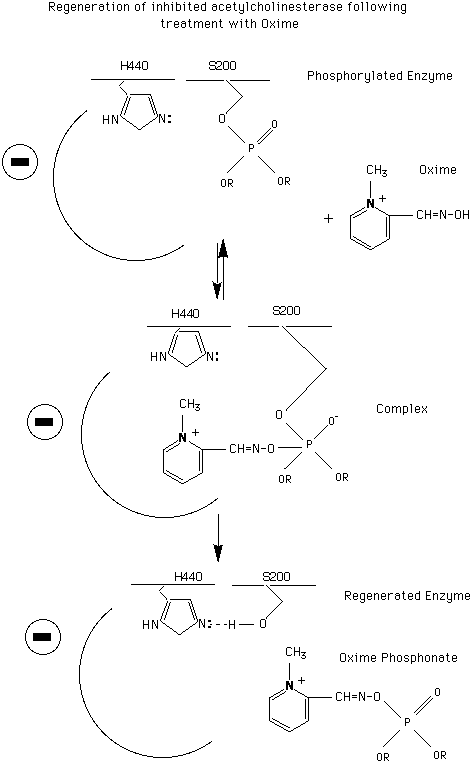
List of reactivators
Aging
This reaction correspond to the dealkylation of the organophosphorous compound.
